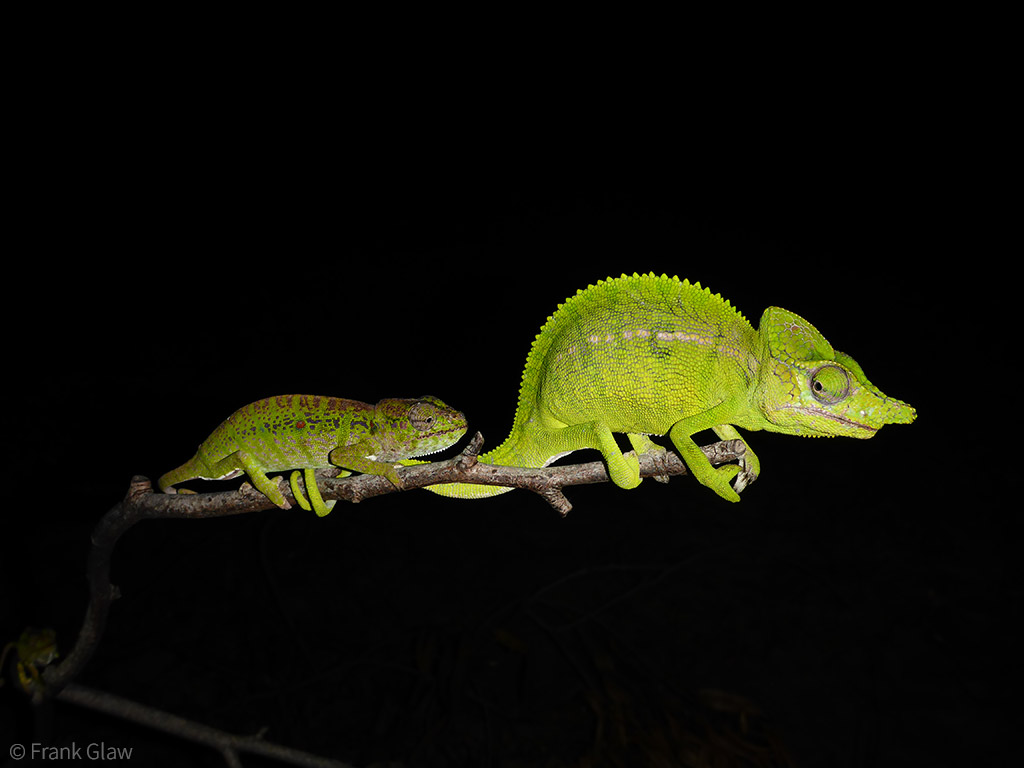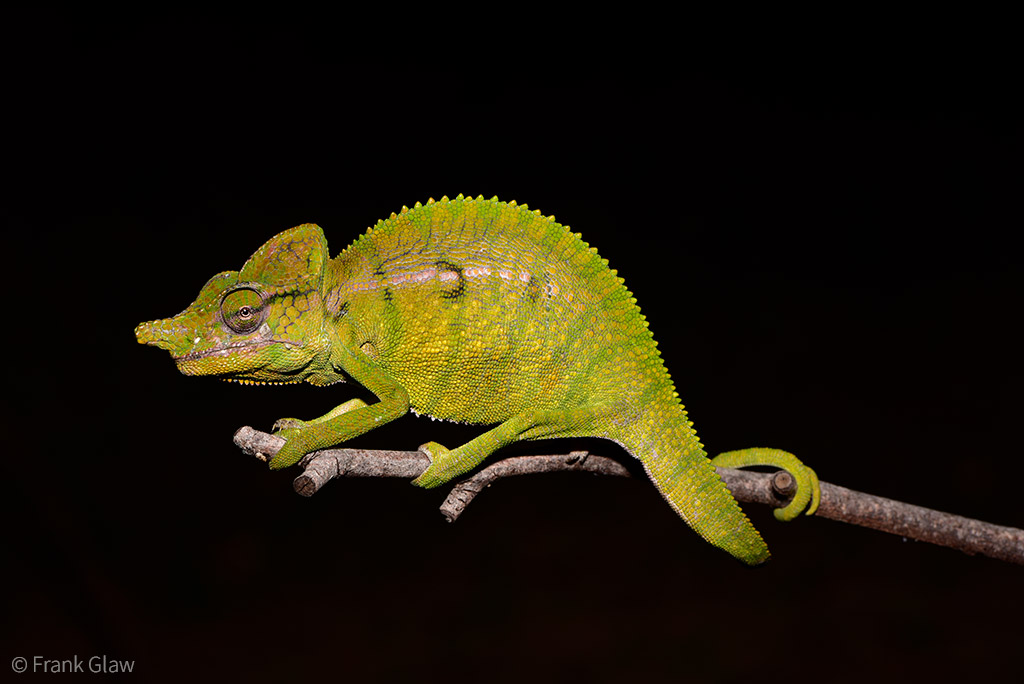
The last official sighting of the Voeltzkow’s chameleon (Furcifer voeltzkowi) was in 1913 in Madagascar, earning it a spot on the Top 25 Most Wanted taxon in Global Wildlife Conservation’s Search for Lost Species initiative. A two-week expedition to north-western Madagascar resulted in not only the rediscovery of this unique chameleon but the very first description of the colourful females.
The Voeltzkow’s chameleon was first described from a male specimen collected by German biologist Alfred Voeltzkow in 1893. Little was known about this cryptic species, and no female specimens had ever been described. The expedition to find the Voeltzkow’s chameleon ran from the 25th of March to the 3rd of April 2018 (during Madagascar’s rainy season) and, according to the biologists, yielded nothing but frustration until the final few days. Angeluc Razafimanantsoa, a professional Malagasy guide and member of the expedition, was the first to spot one of the mysterious chameleons in the wild gardens of Chez Madame Chabaud hotel.
One explanation behind the difficulty in finding the Voeltzkow’s chameleon lies in its close relationship to the Labord’s chameleon (Furcifer labordi), which lives for just a few months every year. The eggs of the Labord’s chameleon hatch in November and the young chameleons reach sexual maturity extremely rapidly (within two months). Once the mature individuals have had the opportunity to mate and lay their eggs in January and February, they will die just a month or two later. Biologists believe it highly likely that the Voeltzkow’s chameleon follows a similar lifecycle which has made finding them a challenging task. This has been exacerbated by the fact that adult chameleons are active during Madagascar’s rainy season, where parts of the island become almost inaccessible.

Nevertheless, the team managed to find three males and 15 females – numbers which, according to the researchers, suggest the possibility of a healthy population for a short-lived species. They also discovered just how colourful the females, particularly gravid (pregnant) females, can be. The newly released paper on the discovery describes how the Voeltzkow’s chameleon is a sexually dimorphic species, with the males observed to be significantly less colourful than their female counterparts (though both are primarily green in colour when relaxed). Like all chameleons, the female Voeltzkow’s chameleons change colour according to their moods, particularly when antagonized in some way, displaying vivid and highly variable colour patterns of purple, orange, red, green, black, and white.

The newly published study released in Salamandra, the German Journal of Herpetology, the researchers detail the findings of the 2018 expedition, providing the first new information on the little animal’s genetics, morphology, and behaviour in over a century.
Madagascar is home to around half the world’s chameleon species, over 100 of which are endemic. Of these Malagasy chameleons, 52% are threatened, and 70% are considered threatened or near-threatened. Habitat loss and deforestation are some of the main threats facing most of the island’s endemic wildlife – it is believed that less than 10% of Madagascar’s natural forests remain.
“The Voeltzkow’s chameleon is a powerful flagship species for conservation in the region,” said Carlos Zanotelli, a member of the 2018 expedition. “It is imperative that we protect nature and treat natural habitats as if we would like to live there. Only in this way can we ensure the future of the incredible species, like the Voeltzkow’s chameleon, we share this planet with.”

Along with the rediscovery of the Somali sengi announced earlier this year, the Voeltzkow’s chameleon is the sixth species on the Global Wildlife Conservation’s 25 most wanted list to be confirmed as having been rediscovered. As the study on the Voeltzkow’s chameleon succinctly explains, “rediscoveries of “lost” species are important as they provide crucial data for conservation measures and bring some hope amidst the biodiversity crisis.”![]()
The full paper can be accessed here: “Rediscovery, conservation status and genetic relationships of the Malagasy chameleon Furcifer voeltzkowi”, Glaw, F., et al., (2020), Salamandra
To comment on this story: Login (or sign up) to our app here - it's a troll-free safe place 🙂.![]()






